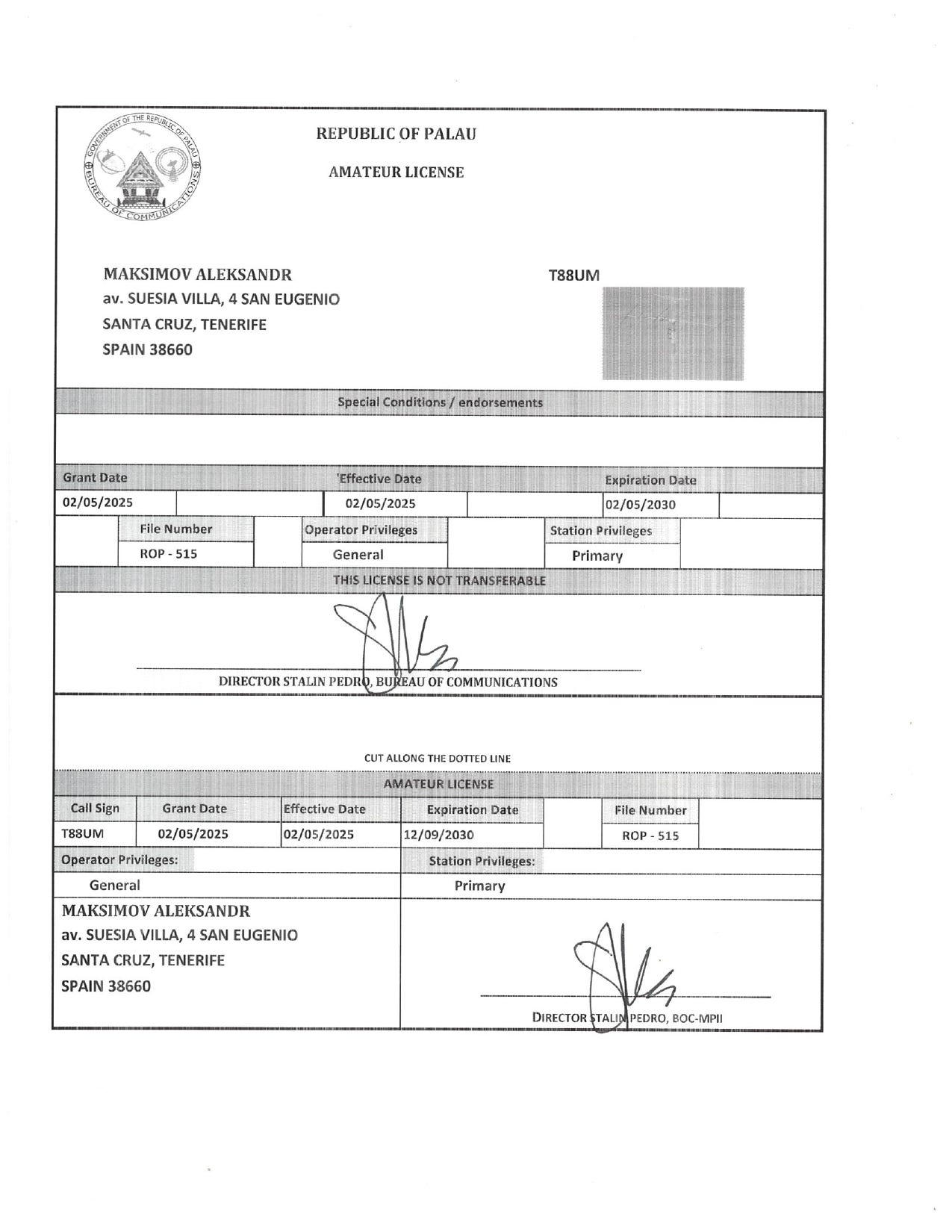New DXCC on 1296 MHz - KH0, KH2, T8
It’s been far too long since my last expedition to the Pacific Ocean islands—over 20 years, to be exact, with KH1 and 3D2. Time flies, doesn’t it, starting to feel a little bit old.....
Tickets are booked, and I’ve secured some promising QTHs to activate Saipan, Guam, and Palau. Here’s the planned schedule:
February 28 – March 3: KH0/EA8DBM QK25 (Approx. MR: 22:30 utc, MS: 10:30 utc)
March 4 – March 6: KH2/EA8DBM QK23 (Approx. MR: 00:30 utc, MS: 13:30 utc)
March 8 – March 11: T88UM PJ77 (Approx. MR: 05:30 utc, MS: 18:00 utc)
Finding a good QTH remains the biggest challenge. Open views to both the east and west are essential, but there’s always a chance that unforeseen obstacles—like buildings or palm trees—could block critical directions. It’s a bit of a lottery, as always.
To maximize my time, I’ve aligned the expedition with peak lunar declination, which unfortunately limits the window to just 10–12 days. As a result, I’ll only have 3–4 active days per DXCC. After that, I’ll reward myself with a week of diving in Palau!
I’ll be using the same 2.4m folding dish covered in foil as in previous trips. The LNA, from AG6EE, has been upgraded and lab-tested, boasting an impressive 0.57 dB noise figure at the output (including all adapters and relays).
For amplification, I’ll be running a brand-new 500-watt amplifier from AG6EE. While it hasn’t been “field-tested” yet, it’s promising! Since the Comcast coupler can’t handle more than 200 watts, I’ve switched to a 500-watt Suhner coupler. It’s twice as heavy, but necessary for the job.
Big thanks to OK1DFC for providing a specially designed 23cm septum feed, optimized for expedition use. I’m hopeful this will significantly enhance reception—thank you, Zdenek!
Shoutout to Anton UR3VKE as well, who redesigned and tested a new transverter for 13cm and 23cm setups. If everything goes well, I’ll try activating the 13cm band too.
I’ll begin operations on the 23cm band using Q65-30B mode on 1296.100 CFOM. For smaller stations, I’ll switch to 60C mode or, upon request, 120D.
The shortest moonrise window will favor the east coast of the USA, while moonset will prioritize G, ON, and PA stations. These will take priority to ensure good coverage.
Please note that this platform doesn’t support automated notifications for post updates or changes. To stay informed about expedition updates or cancellations, I recommend checking back here periodically.
Once I arrive at each location, I’ll post detailed logs for every QTH.
Thank you for your support, see you all soon ;)




